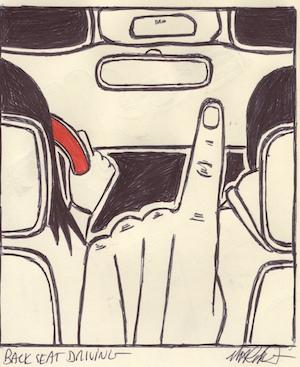Backseat Drivers: Unions Hijack Rideshare

By Olivia Grady
James Sherk, Labor Economics Research Fellow at the Heritage Foundation, authored an issue brief released on December 12, 2016 entitled “Compulsory Union Representation Would Make Gig-Economy Jobs Less Flexible.”
Sherk begins by arguing that unionizing rideshare drivers would be impermissible under U.S. labor law. Even if it wasn’t illegal, it would still be bad policy. Sherk notes that workers in the gig economy, including Uber and Lyft, are part-time workers, not the long-term, full-time workers that unions commonly propose contracts for.
Sherk next describes the recent Seattle Ordinance (124968), the first of its kind, which allowed for unionization of self-employed rideshare drivers on December 23, 2015. The ordinance permitted taxi, for-hire, and Transportation Network Company (i.e. Uber or Lyft) drivers classified as independent contractors to unionize through publicly signed cards. Unions can now negotiate the nature and amount of payments to be made by the driver coordinator to the drivers, the nature and amount of payments to be withheld from the driver coordinator by the drivers, the minimum hours of work, the driver’s conditions of work, and compulsory union dues.
After describing the ordinance, Sherk explains that these state and local laws that unionize rideshare drivers are unlawful under federal law because the National Labor Relations Act (NLRA) exempts independent contractors from collective bargaining. The NLRA preempts state and local laws on private-sector unions. Unionizing independent contractors also might violate anti-trust law because these workers are legally businesses who aren’t allowed to set prices.
But even if it were legal, would it be a good idea? Sherk says no. Unions focus more on full-time drivers, hurting part-time drivers, because full-time workers are more powerful. Part-time drivers or those with fewer than 52 rides in three months aren’t even allowed to participate in choosing the union to represent them. These part-time drivers are stuck with representation chosen by full-time drivers. This regulation removes one-third of the drivers from the union selection process. This control by full-time workers is further exacerbated, especially for rideshare drivers, by the fact that fewer than 20 percent of employees vote in the election for a union, and the majority who do vote are full-time employees.
Unions could also determine a minimum number of hours that drivers must work, hurting the part-time drivers or 55 percent of Uber’s drivers. The full-time workers actually benefit from this regulation because they have more rides due to fewer drivers.
Unions could also limit the best locations and times to full-time drivers with seniority and cut benefits for junior drivers in exchange for greater benefits for senior drivers. Most junior workers do not qualify for benefits if there is a union. These problems would be worse for ridesharing because two-thirds of drivers only drive for two years, meaning they wouldn’t receive any benefits. A union could finally give pay raises to full-time drivers while lowering pay for part-time workers.
Unionizing these workers would reduce their freedom to work when they want to. Sherk concludes by giving the many benefits of the gig economy for drivers. With the gig economy, drivers can supplement their income when they aren’t working on another job or earn income if they can’t commit to a traditional work schedule. Drivers also have a lot of flexibility. As a result, most drivers are very happy with the arrangement with TNC companies, and unionizing these drivers would disrupt the livelihood of these workers.
So for Uber drivers, whether they like the freedom to work when they want, the flexibility to be their own boss, or the ability to supplement their income, you can bet the union will kill it all.





